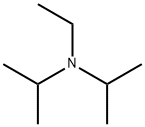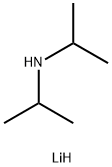2,2-Dimethyl-1,3-dioxolane-4-methanol
Synonym(s):(±)-2,2-Dimethyl-1,3-dioxolane-4-methanol;(±)-2,2-Dimethyl-4-hydroxymethyl-1,3-dioxolane;1,2-Isopropylidene-rac-glycerol;Solketal
- CAS NO.:100-79-8
- Empirical Formula: C6H12O3
- Molecular Weight: 132.16
- MDL number: MFCD00063238
- EINECS: 202-888-7
- SAFETY DATA SHEET (SDS)
- Update Date: 2025-01-27 09:38:02

What is 2,2-Dimethyl-1,3-dioxolane-4-methanol?
Description
1,2-Isopropylideneglycerol (IPG) is a relatively high-boiling solvent and reagent that also goes by the names 2,2-dimethyl-1,3-dioxolane-4-methanol, acetone glycerol, and the trade name Solketal. It is miscible with water and organic solvents that range in polarity from alcohols to hydrocarbons. The molecule has a stereogenic center, but the article of commerce is normally the racemic mixture.
IPG was first synthesized in 1895 by legendary German organic chemist Emil Fischer1 during his research on the reactions of sugars with aldehydes and ketones. He and his colleagues treated anhydrous glycerol with acetone and a catalytic amount of hydrogen chloride. Researchers have continued to refine the synthesis; today, IPG is produced continuously using heterogeneous catalysis.
IPG is used as a starting material for producing glycerides by esterification of its hydroxyl group and transesterification of the isopropylidine moiety. It is also widely used as a solvent for chemical reactions and as a component of various types of cleaning solutions.
The wide availability of byproduct glycerol from biodiesel manufacture allows IPG producers to claim that it is a “green” solvent. As an example, the chemical giant Solvay makes it in Brazil under the trade name Augeo Clean Multi. In addition to the solvent’s sustainability, Solvay claims benefits such as low vapor pressure, slight odor, high flash point, and low human and environmental toxicity.
1. Fischer was the 1902 recipient of the Nobel Prize in Chemistry.
Chemical properties
clear colourless liquid
The Uses of 2,2-Dimethyl-1,3-dioxolane-4-methanol
A MEK inhibitor
The Uses of 2,2-Dimethyl-1,3-dioxolane-4-methanol
Solketal is useful for synthesis of mono-, di- and triglycerides. It is used as the starting reagent for synthesis of tulipaline derivatives. It acts as a fuel additive in gasoline. It is an inhibitor of Methyl ethyl ketone .
The Uses of 2,2-Dimethyl-1,3-dioxolane-4-methanol
DL-1,2-Isopropylideneglycerol was used as the starting reagent for synthesis of tulipaline derivatives.
Synthesis Reference(s)
Tetrahedron, 52, p. 9387, 1996 DOI: 10.1016/0040-4020(96)00501-7
The Journal of Organic Chemistry, 53, p. 2859, 1988 DOI: 10.1021/jo00247a043
General Description
DL-1,2-Isopropylideneglycerol undergoes effective isopropylidenation and deprotection reaction catalyzed by phosphotungstic acid.
Safety Profile
A poison by intravenous route. An eye irritant. Mutation data reported. A very dangerous fire hazard when exposed to heat or flame; can react vigorously with oxidizing materials. To fight fire, use alcohol foam, CO2, dry chemical. When heated to decomposition it emits acrid smoke and fumes.
Properties of 2,2-Dimethyl-1,3-dioxolane-4-methanol
| Melting point: | -27℃ |
| Boiling point: | 189-191 °C |
| Density | 1.066 g/mL at 20 °C(lit.) |
| vapor pressure | 34Pa at 20℃ |
| refractive index | n |
| Flash point: | 176 °F |
| storage temp. | Sealed in dry,2-8°C |
| solubility | 172g/l soluble |
| form | Liquid |
| appearance | colorless oily liquid |
| pka | 14.20±0.10(Predicted) |
| color | Clear colorless |
| PH | 4.0-7.5 (H2O) |
| Water Solubility | miscible |
| Merck | 14,5213 |
| BRN | 104465 |
| CAS DataBase Reference | 100-79-8(CAS DataBase Reference) |
| NIST Chemistry Reference | 1,3-Dioxolane-4-methanol, 2,2-dimethyl-(100-79-8) |
| EPA Substance Registry System | 1,3-Dioxolane-4-methanol, 2,2-dimethyl- (100-79-8) |
Safety information for 2,2-Dimethyl-1,3-dioxolane-4-methanol
| Signal word | Warning |
| Pictogram(s) |
 Exclamation Mark Irritant GHS07 |
| GHS Hazard Statements |
H319:Serious eye damage/eye irritation |
| Precautionary Statement Codes |
P264:Wash hands thoroughly after handling. P264:Wash skin thouroughly after handling. P280:Wear protective gloves/protective clothing/eye protection/face protection. P305+P351+P338:IF IN EYES: Rinse cautiously with water for several minutes. Remove contact lenses, if present and easy to do. Continuerinsing. P337+P313:IF eye irritation persists: Get medical advice/attention. |
Computed Descriptors for 2,2-Dimethyl-1,3-dioxolane-4-methanol
| InChIKey | RNVYQYLELCKWAN-UHFFFAOYSA-N |
New Products
2-Propanamine, 1-chloro-, hydrochloride (9CI) 3-Pyridineacetonitrile, α-hydroxy- 3-Iodophenylacetic acid 3-(hexyloxy)-4-(pyridin-3-yl)-1,2,5-thiadiazole 2-Hexyn-1-ol Dibenzo-18-crown-6 Strontium Carbonate, 98% Wang resin Sodium hydrogenphosphate, anhydrous 2-Bromo-3-methoxyaniline hydrochloride, 95% (Custom work) 1-Bromo-4-chlorobenzene, 99% Benzocaine, 98% (R)-2-Methylpyrolidine-2-carboxylic acid (De Mepro) Ramipril Sacubitril- Valsartan Boc-his(trt)-OH Fmoc-L-Glu-OtBu Boc-L-Tyr(tBu)-OH Semi carbazide Hydrochloride 1-Ethyl-3-(3-Dimethylaminopropyl)-Carbodiimide Hydrochloride [EDC Hcl] 5-(Difluoromethoxy)-2-Mercaptobenzimidazole 2-Chloromethyl-4-methyl-quinazoline Trans-4-Aminocyclohexanol [4tac] 2-[1-(Mercaptomethyl)Cyclopropyl]Acetic AcidRelated products of tetrahydrofuran








You may like
-
 Solketal CAS 100-79-8View Details
Solketal CAS 100-79-8View Details
100-79-8 -
 Solketal 97% CAS 100-79-8View Details
Solketal 97% CAS 100-79-8View Details
100-79-8 -
 2,2-Dimethyl-1,3-dioxolane-4-methanol CAS 100-79-8View Details
2,2-Dimethyl-1,3-dioxolane-4-methanol CAS 100-79-8View Details
100-79-8 -
 DL-1,2-Isopropylideneglycerol CAS 100-79-8View Details
DL-1,2-Isopropylideneglycerol CAS 100-79-8View Details
100-79-8 -
 15761-38-3 N-Boc-L-Alanine >98%View Details
15761-38-3 N-Boc-L-Alanine >98%View Details
15761-38-3 -
 6485-34-3 Saccharin Calcium >98%View Details
6485-34-3 Saccharin Calcium >98%View Details
6485-34-3 -
 Fmoc-Gly-Pro-OH >98%View Details
Fmoc-Gly-Pro-OH >98%View Details
212651-48-4 -
 18568-74-8 >98%View Details
18568-74-8 >98%View Details
18568-74-8
